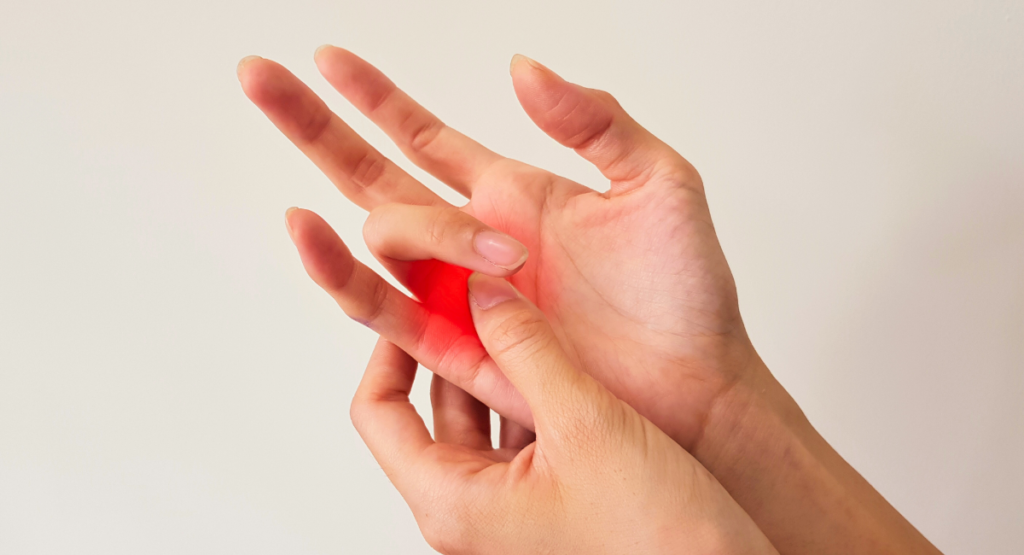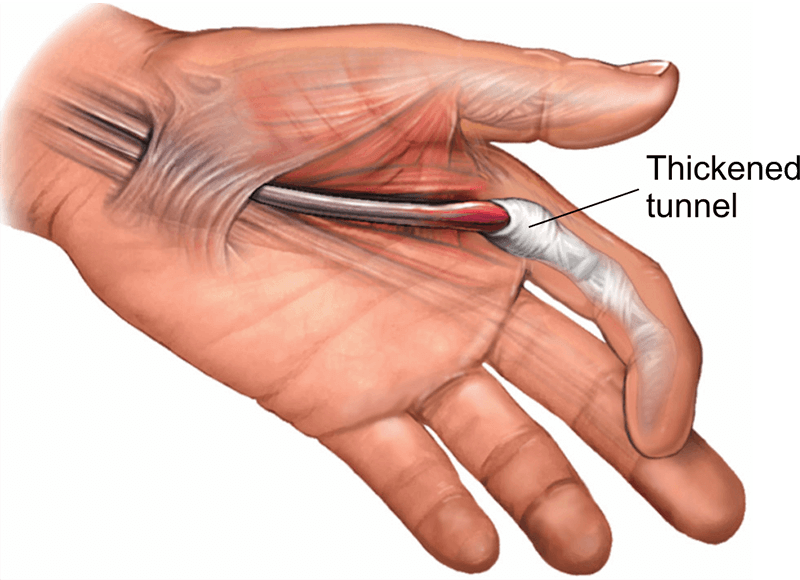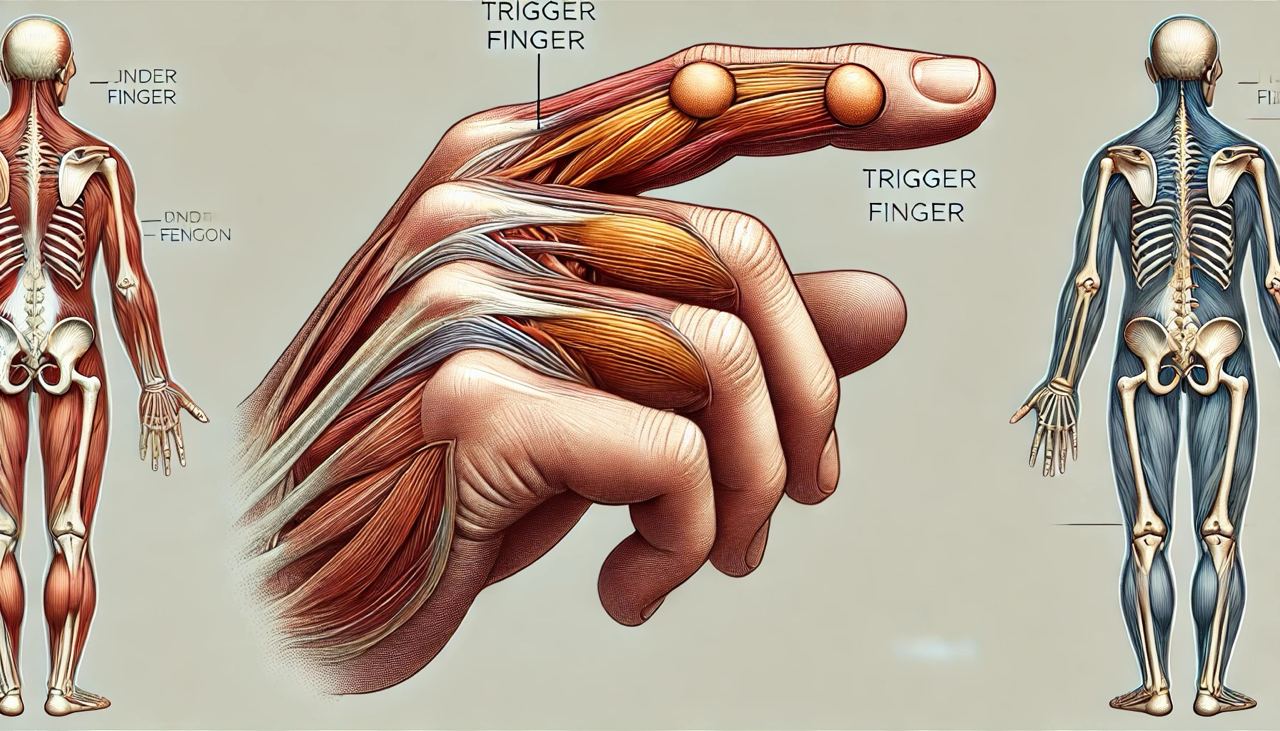Definition of trigger finger
Trigger finger is, in essence, a condition involving inflammation of the tendon sheath of the flexor tendons of the fingers. Consequently, this inflammation causes the tendon sheath to narrow. In some cases, the inflamed flexor tendons develop nodules, which impede the mobility of the flexor tendon through these nodules.
As a result, each time the finger is flexed or extended, it becomes challenging. Therefore, the patient must either try to pop the finger out or use the uninjured hand to pull the finger out, as if it had a spring. This explains why the disease is referred to as the trigger finger.

Causes
- Some occupations have a high risk of disease: Farmers, teachers, barbers, surgeons, artisans, etc.
- Injuries.
- Consequences of some diseases: Rheumatoid arthritis, diabetes, psoriatic arthritis, gout, etc.
Symptom of trigger finger
The symptoms of trigger finger are easy to recognize because they bring a particularly uncomfortable feeling to the patient:
- Flexing one or more fingers may be difficult, and the finger can get stuck in a flexed position, resembling a trigger.
- Finger pain at the site of the inflamed tendon sheath and the nodule, as well as difficulty moving the finger.
- You can feel the nodule on the flexor tendon of the finger at the metacarpophalangeal joint. The nodule moves when flexing and extending the finger.
- The finger maybe swollen.

Diagnosis
Doctors can diagnose trigger finger based on clinical symptoms. However, they sometimes need paraclinical tests to support differential diagnosis and treatment.
- Ultrasound: ultrasound with a probe frequency of> 7.5-20MHz can see thickened tendons, tendon sheaths, and surrounding fluid. Images of tendon sheath fibrosis can be seen.
- You do not need special blood tests or X-rays. However, you must perform basic tests before administering medication or injecting corticosteroids, particularly blood sugar, and liver and kidney function tests.
Treatment
Although not a dangerous disease, if not treated early and closely managed, a trigger finger can cause serious consequences such as atrophy of the flexor muscles of the fingers, stiffness of the flexor tendons, and loss of grip function of the hand.
- Treatment principles:
- Combining various treatment methods can be effective. These methods include no medication, medication, local corticosteroid injections, physical therapy, rehabilitation, or surgery.
- Additionally, actively preventing disease recurrence involves using a gentle and reasonable work and living regimen. This approach should be combined with medication, physical therapy, and rehabilitation to achieve the best results.
- Non-drug treatment:
- First, limit movement of the damaged tendon.
- Additionally, physical therapy can include ultrasound therapy, cold compresses if there is swelling or redness, and infrared radiation.
- Moreover, acupressure massage involves pressing and kneading to increase circulation, reduce pain, and help soften stiff and inflamed tendons.
- Furthermore, acupuncture helps by stimulating local tendons, reducing pain, and increasing circulation.
- Drug treatment:
- Step-by-step analgesics: Paracetamol/Codeine.
- NSAID anti-inflammatory analgesics: Diclofenac, Meloxicam
- Local corticosteroid injections (Betamethasone, Methylprednisolone) must comply with the indications and contraindications.

- Surgical treatment: Surgery to relieve compression and remove the fibrotic inflammation if medical treatment fails.
Prevention
- First, limit finger use and establish a reasonable rest regimen.
- Additionally, practice hand and finger exercises to support recovery.
- Furthermore, stabilize any chronic diseases, such as obesity, gout, diabetes, or rheumatoid arthritis, if present.

